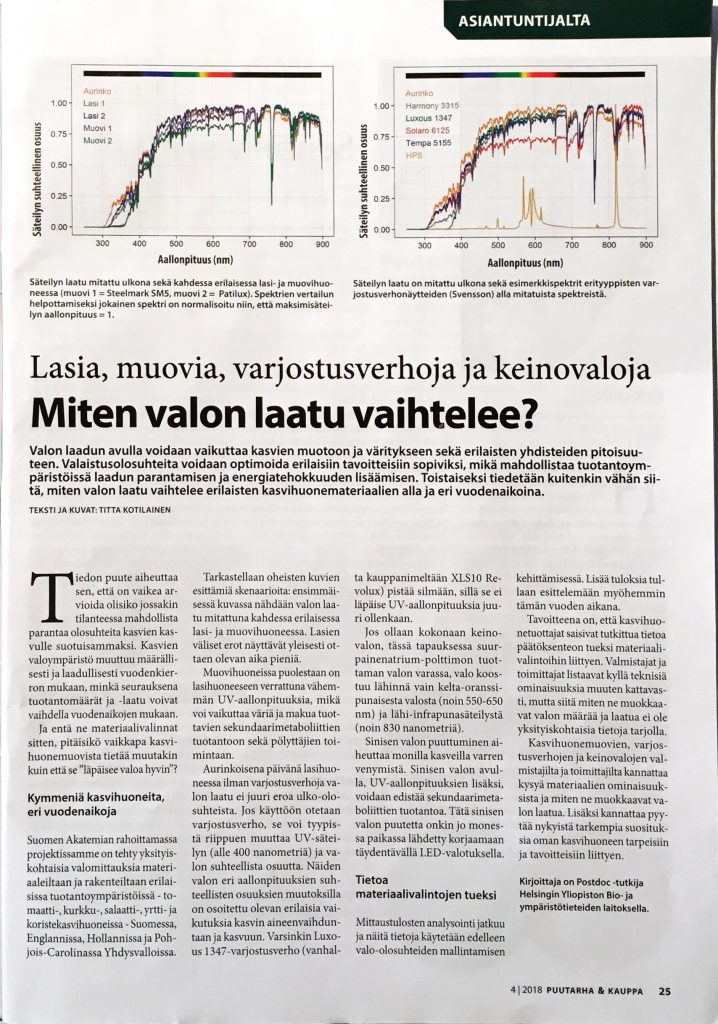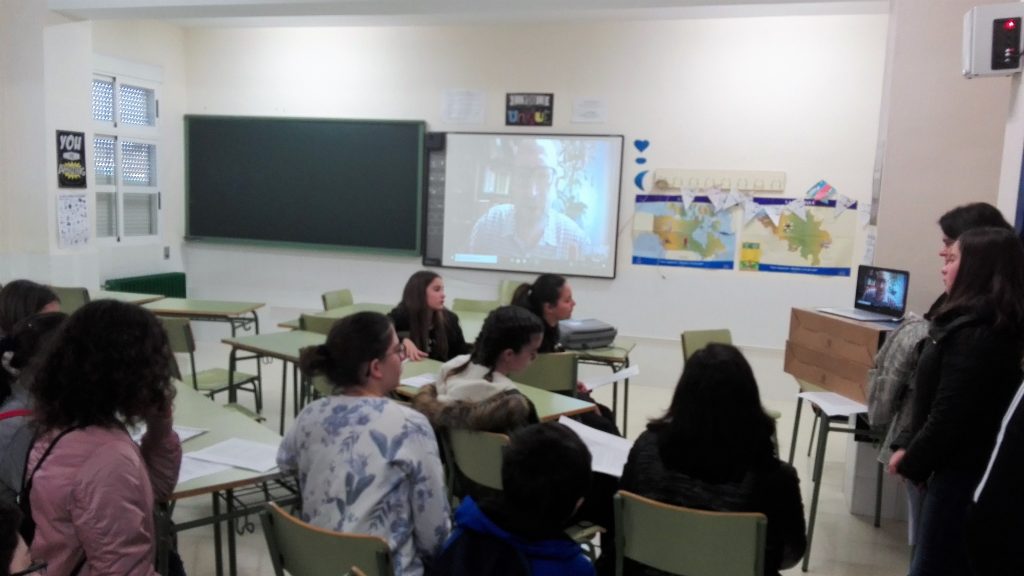Shade screen and net are used to control the environment of plants growing in polytunnels and greenhouses but they have some unintended consequences in modifying the spectrum of light that plants receive.
Titta Kotilainen has a new article out describing these effects and what they imply for the use and selection of these products. Check it out in PLOS one – HERE!
We recently spent the week at GreenTech Expo in Amsterdam finding out more about innovations in LED lighting and spectral manipulation of the light used in plant production scenarios. In response we are preparing an extended a continuation of our research into spectral quality with an extended dataset of screen and net assessments.
![]()


